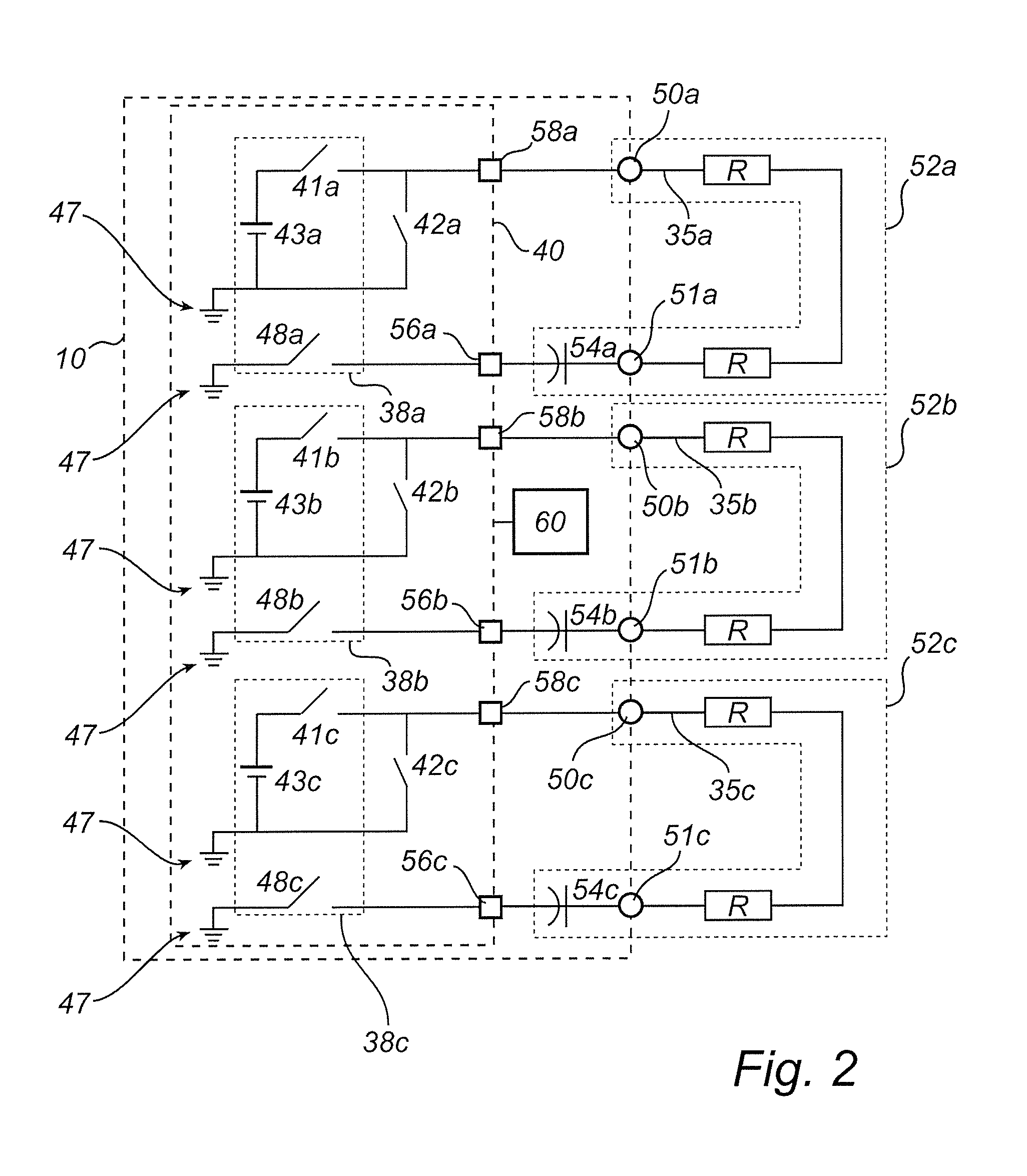Implanted heart-stimulation device enabling charge balance after stimulation sequence
a heart-stimulation and sequence technology, applied in the field of implantable medical devices, can solve the problems of reducing blood circulation, affecting cardiac function, and affecting cardiac function, and achieve the effect of convenient portability
- Summary
- Abstract
- Description
- Claims
- Application Information
AI Technical Summary
Benefits of technology
Problems solved by technology
Method used
Image
Examples
Embodiment Construction
[0056]The following is a description of exemplifying embodiments in accordance with the present invention. It is to be understood that the following description is non-limiting and for the purpose of describing the principles of the invention, and thus, even though particular types of implantable medical devices such as heart stimulators (pacemakers) are described, the invention is also applicable to other types of cardiac rhythm management systems, such as implantable cardioverters (defibrillators), etc.
[0057]Referring to FIG. 1, there is shown an implantable medical device 10, e.g. a heart-stimulation device according to an embodiment of the present invention. The heart-stimulation device 10 has a housing 12 that may be hermetically sealed and biologically inert. Normally, the housing 12 may be conductive, and may as such serve as an electrode. As illustrated in FIG. 1, the heart-stimulation device 10 may electrically communicate with a patient's heart 8 by way of medical leads 20...
PUM
 Login to View More
Login to View More Abstract
Description
Claims
Application Information
 Login to View More
Login to View More - R&D
- Intellectual Property
- Life Sciences
- Materials
- Tech Scout
- Unparalleled Data Quality
- Higher Quality Content
- 60% Fewer Hallucinations
Browse by: Latest US Patents, China's latest patents, Technical Efficacy Thesaurus, Application Domain, Technology Topic, Popular Technical Reports.
© 2025 PatSnap. All rights reserved.Legal|Privacy policy|Modern Slavery Act Transparency Statement|Sitemap|About US| Contact US: help@patsnap.com



